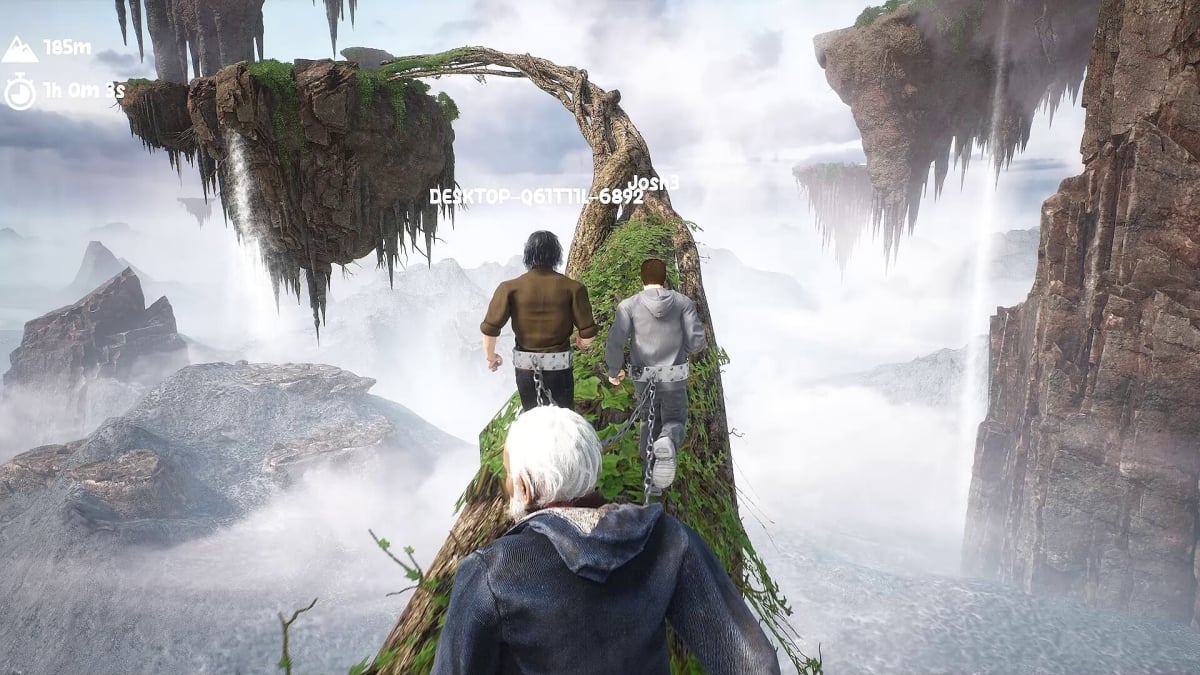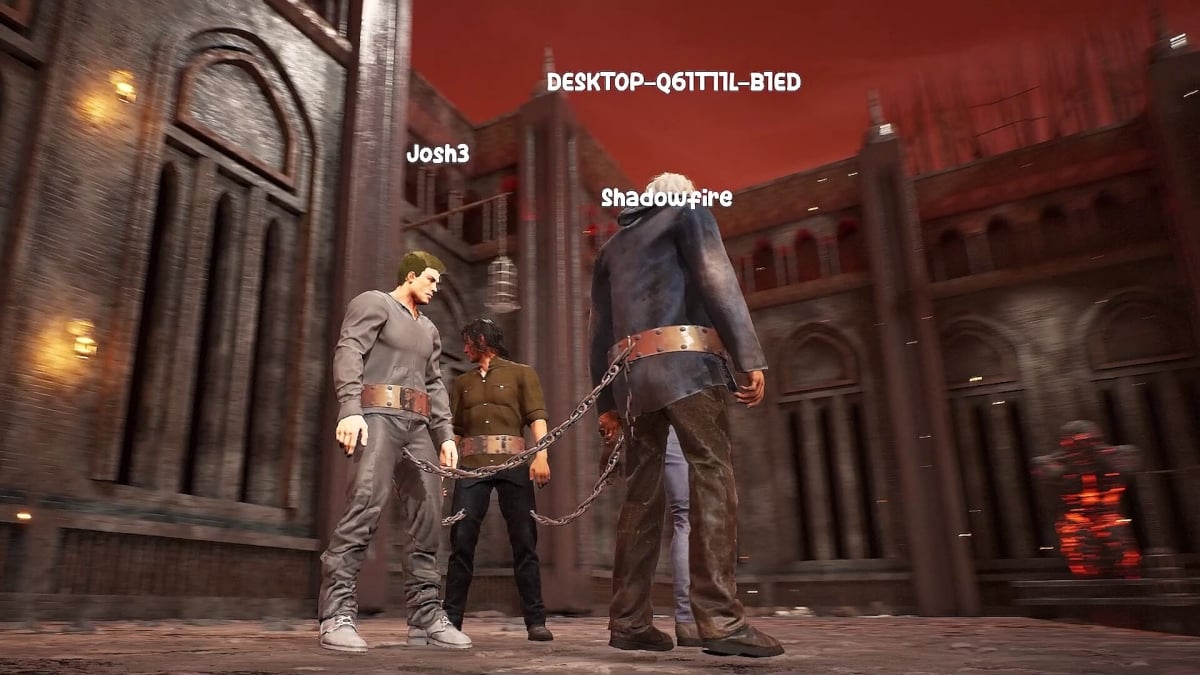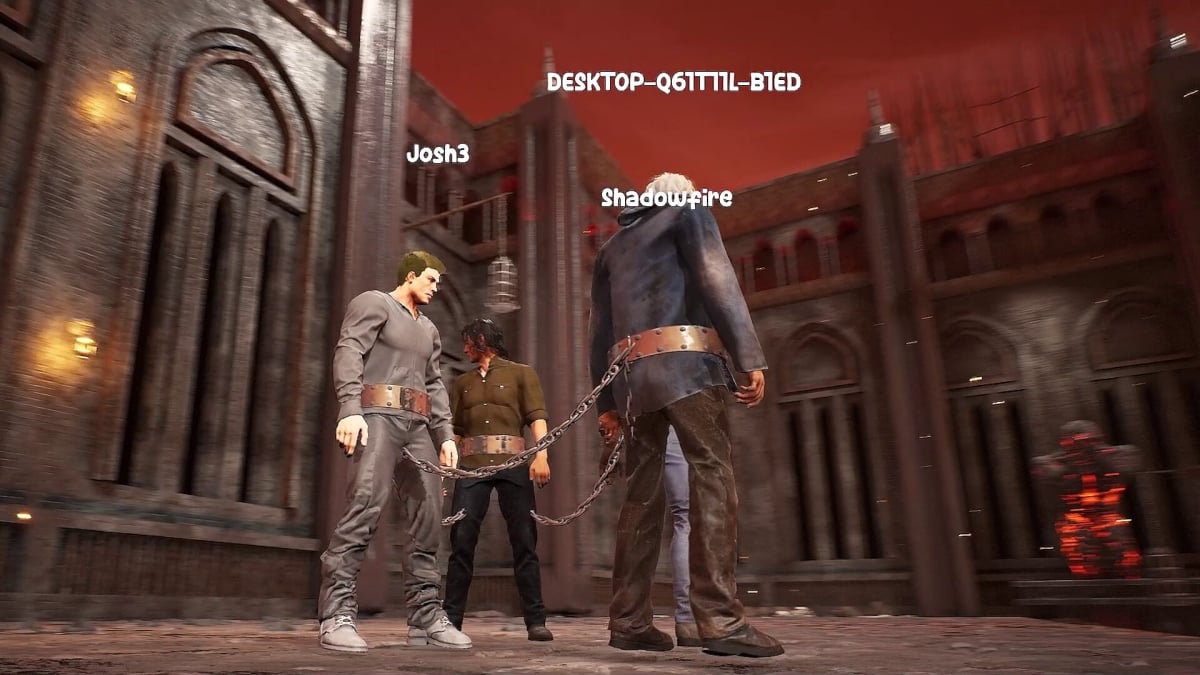In the captivating realm of video games, “game where you are chained together” emerges as a captivating concept, intertwining characters in a physical and metaphorical dance that profoundly impacts gameplay and storytelling. This innovative mechanic presents a unique blend of challenges, opportunities, and emotional resonance, inviting players to unravel the intricate dynamics that unfold when characters are inextricably linked.
The chain mechanic introduces a tangible constraint that influences every aspect of the gaming experience. Characters must navigate levels, solve puzzles, and interact with each other while tethered together, fostering a heightened sense of interdependence and collaboration. This physical connection becomes a catalyst for both cooperation and conflict, as players learn to adapt their strategies and communication to overcome obstacles and achieve their goals.
Game Mechanics
In a chained-together game mechanic, players are connected by a virtual or physical chain that restricts their movement and interactions. This unique gameplay element introduces a dynamic challenge that alters the way players approach obstacles and collaborate.
The chain mechanic creates a constant tension between cooperation and independence. Players must work together to overcome obstacles that require coordinated movement, such as jumping over gaps or navigating narrow passages. However, the chain also limits their freedom, forcing them to adjust their strategies and find creative ways to progress.
Challenges and Obstacles
The chain mechanic can be used to create a wide range of challenges and obstacles, including:
- Limited Movement:The chain restricts players’ range of motion, making it difficult to navigate tight spaces or avoid hazards.
- Coordination:Players must coordinate their movements to overcome obstacles that require synchronized actions.
- Decision-Making:The chain mechanic introduces a strategic element, as players must decide when to prioritize cooperation and when to act independently.
- Environmental Hazards:The chain can interact with the environment, creating additional obstacles, such as getting caught on objects or blocking paths.
Examples of Implementation
Several games have successfully implemented the chained-together mechanic:
- Brothers: A Tale of Two Sons:This adventure game features two brothers chained together, forcing players to control both characters simultaneously.
- Trine Series:This platformer series features three characters connected by a rope, adding an extra layer of challenge to puzzles and combat.
- It Takes Two:This cooperative adventure game features two characters permanently chained together, creating unique gameplay mechanics and puzzles.
Character Dynamics

When characters are physically connected, it creates a unique set of interpersonal dynamics. The chain mechanic can affect communication, cooperation, and conflict between characters in several ways.
For instance, the chain can make communication more difficult. Characters may have to shout to be heard over the noise of the chain, or they may have to take turns speaking. This can lead to misunderstandings and frustration.
Cooperation
The chain can also make cooperation more difficult. Characters may have to work together to overcome obstacles, but the chain can make it difficult to coordinate their movements. This can lead to arguments and disagreements.
Conflict
The chain can also lead to conflict. Characters may start to resent each other if they feel like they are being held back by the chain. This can lead to arguments, fights, and even violence.
Despite the challenges, the chain mechanic can also be used to create memorable and engaging character interactions. For example, the chain can be used to create a sense of camaraderie between characters. When characters have to work together to overcome obstacles, they can develop a strong bond.
The chain can also be used to create humor. For example, characters may get tangled up in the chain or they may trip over it. This can lead to some funny moments.
Overall, the chain mechanic can be a powerful tool for creating memorable and engaging character interactions. However, it is important to be aware of the challenges that the chain can create. By carefully considering the impact of the chain on communication, cooperation, and conflict, developers can create games that are both fun and challenging.
Level Design
The chain mechanic can significantly influence level design and environmental puzzles, introducing unique challenges and opportunities for game designers. By incorporating the chain’s constraints and limitations into level design, developers can create innovative and engaging experiences that test players’ problem-solving skills and teamwork.
Exploiting Chain Constraints
The chain’s limited length and inability to be broken can be leveraged to create puzzles that require players to carefully plan their movements and coordinate their actions. Levels can be designed with narrow pathways, obstacles that must be navigated in a specific order, and enemies that can only be defeated by working together.
Environmental Interaction
The chain can also interact with the environment in various ways. For instance, it can be used to swing across gaps, pull objects, or activate switches. By incorporating these environmental interactions into level design, developers can create dynamic puzzles that require players to think creatively and use the chain in multiple ways.
Examples of Innovative Levels, Game where you are chained together
- In the game “Trine,” players control three characters who are chained together. Levels feature complex puzzles that require players to use the chain’s length and flexibility to reach platforms, overcome obstacles, and defeat enemies.
- In “Unravel,” players control a yarn character who is tethered to a point in the environment. The chain can be used to swing across gaps, pull objects, and create paths. Levels are designed with intricate puzzles that challenge players to use the chain’s limitations to their advantage.
Cooperative and Competitive Gameplay: Game Where You Are Chained Together
In games where characters are chained together, the potential for both cooperative and competitive gameplay is immense. Cooperative modes require players to work together to overcome challenges, while competitive modes pit them against each other in a race to achieve victory.
Cooperative gameplay in chained-character games presents unique challenges. Players must coordinate their movements and actions to avoid tangling or hindering each other. This can be especially difficult in fast-paced or chaotic environments. However, successful cooperation can lead to a great sense of accomplishment and teamwork.
Competitive Gameplay
Competitive gameplay in chained-character games introduces a different set of challenges and opportunities. Players must not only navigate the environment but also outmaneuver their opponents. This can lead to intense and exciting matches, where players must use their wits and skills to gain an advantage.
One of the most successful examples of a game that has implemented both cooperative and competitive modes is the popular multiplayer title “Gang Beasts.” In its cooperative mode, players must work together to complete various challenges, such as escaping a prison or navigating a treacherous obstacle course.
In its competitive mode, players compete against each other in a variety of arenas, using their unique abilities to knock each other out.
Narrative Potential
The chain mechanic in cooperative games can be an effective storytelling tool, enhancing character development and narrative depth.
As a symbol, the chain can represent the unbreakable bond between characters, highlighting their interdependence and shared experiences. It can also symbolize the challenges and obstacles they face together, as well as the strength and resilience they develop through these trials.
Emotional Resonances
The chain mechanic can create emotionally resonant moments by emphasizing the characters’ physical and emotional connection. For example, in the game Brothers: A Tale of Two Sons, the chain between the two brothers serves as a constant reminder of their shared destiny, amplifying the emotional impact of their journey.
Additionally, the chain can be used to create tension and suspense. In games like Outlast 2, the chain linking the player to a pursuer creates a constant sense of dread and vulnerability, enhancing the game’s horror atmosphere.
Metaphorical Symbolism
Beyond its literal meaning, the chain can also be used metaphorically within the game’s narrative. It can represent the interconnectedness of characters, their shared goals, or the consequences of their actions. For instance, in the game Unravel, the chain symbolizes the protagonist’s memories and experiences, reflecting the fragility and importance of personal connections.
Examples of Compelling Stories
- Brothers: A Tale of Two Sons: The chain between the brothers represents their unbreakable bond, highlighting their shared experiences and emotional connection.
- Outlast 2: The chain linking the player to a pursuer creates a constant sense of dread and vulnerability, enhancing the game’s horror atmosphere.
- Unravel: The chain symbolizes the protagonist’s memories and experiences, reflecting the fragility and importance of personal connections.
Final Summary

The potential of “game where you are chained together” extends far beyond its gameplay mechanics. The chain serves as a potent narrative device, symbolizing the bonds that unite characters and the trials they face together. Through this unique lens, developers can explore themes of trust, communication, and the indomitable spirit of teamwork.
Whether in cooperative or competitive modes, the chain mechanic invites players to forge unbreakable connections and embark on unforgettable adventures.
Query Resolution
What is the key challenge in “game where you are chained together”?
The primary challenge lies in coordinating actions and strategies while navigating levels and solving puzzles with limited physical freedom due to the chain connection.
How does the chain mechanic enhance character dynamics?
The physical connection fosters a sense of interdependence, requiring players to communicate effectively, adapt their playstyles, and overcome conflicts to achieve shared goals.
Can “game where you are chained together” be both cooperative and competitive?
Yes, some games implement both cooperative and competitive modes, where players must work together or against each other while still tethered together, creating unique challenges and opportunities.

